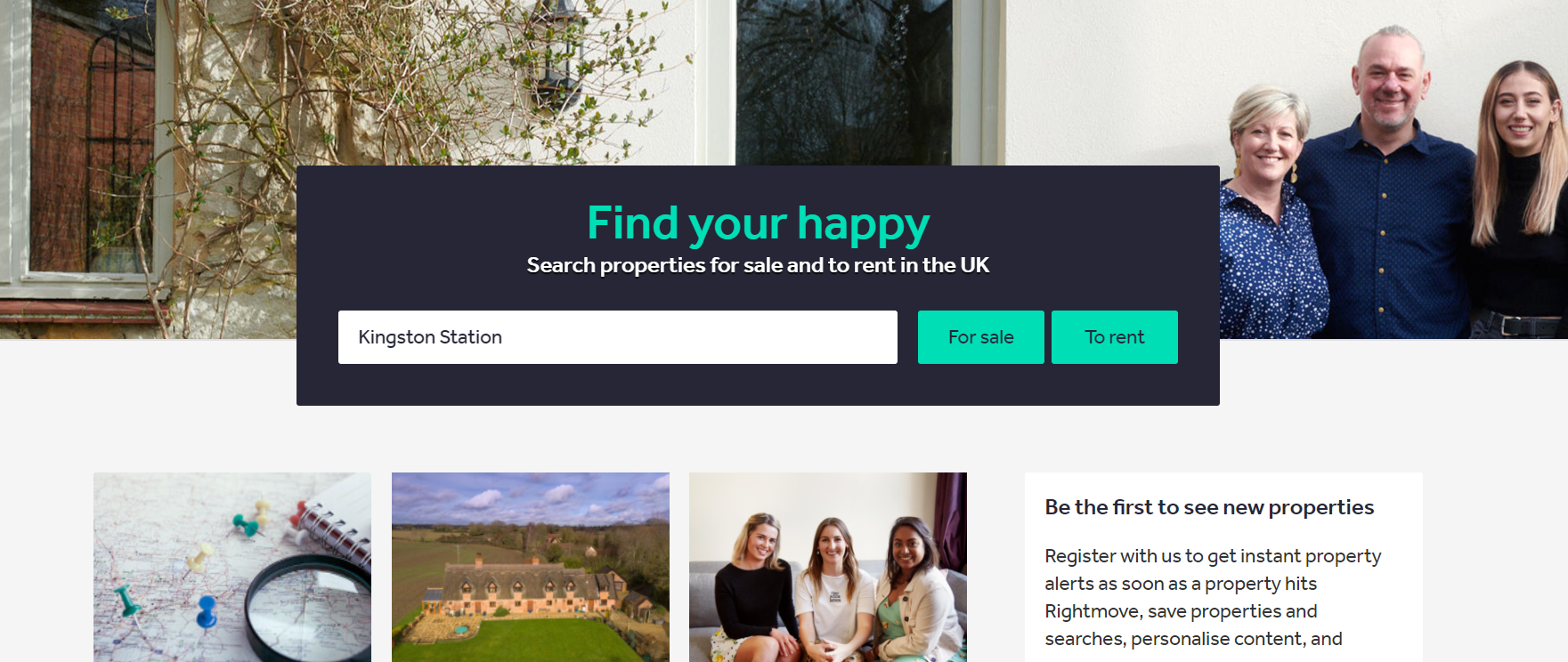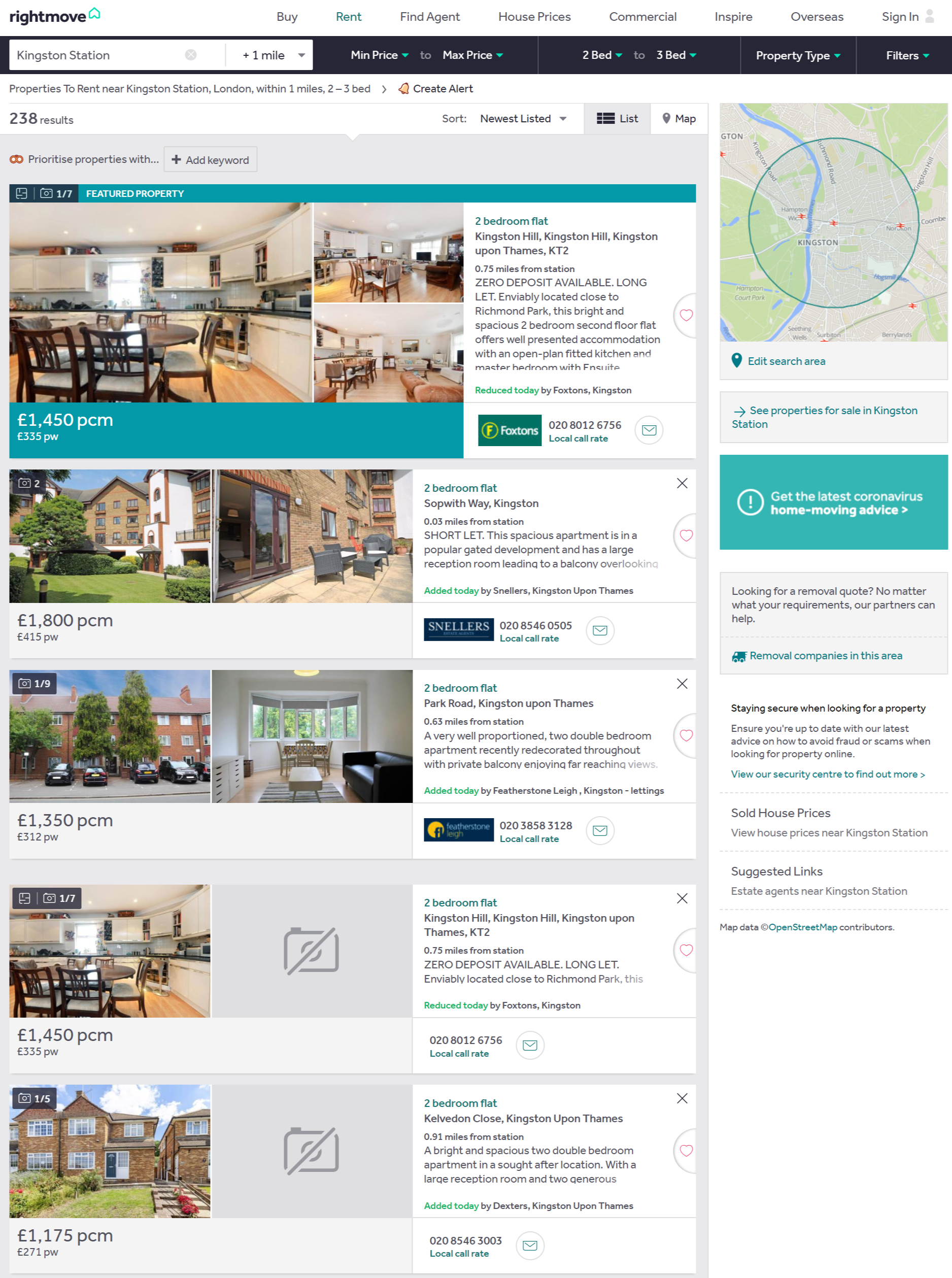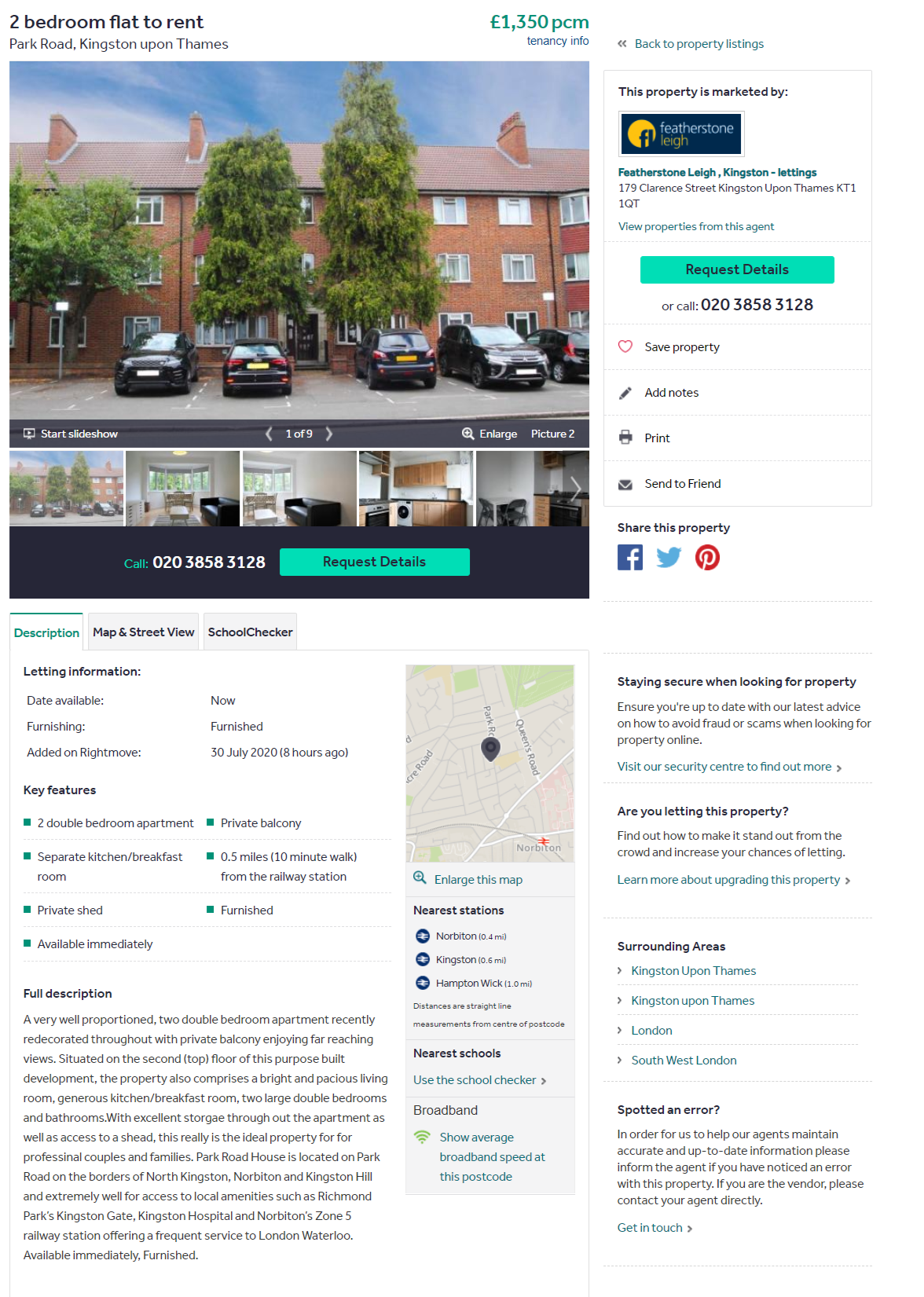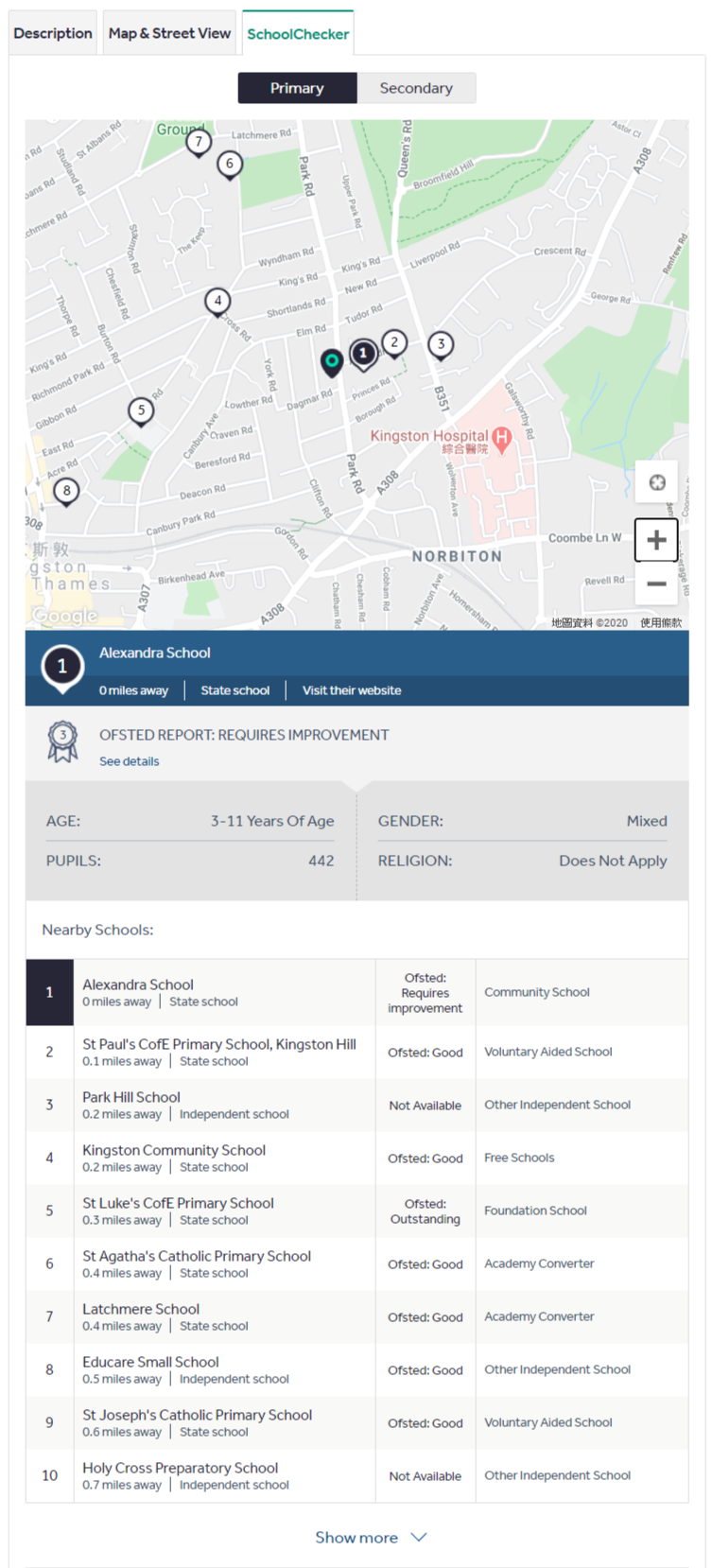Once you’ve decided to move to the UK, the first thing you need to look at is which city/town you will want to settle in. After that, you have to consider whether to buy or rent a house.
If you decide to rent a house, you can see which houses are available in your chosen residential area. In the UK, there are two major real estate websites, Rightmove and Zoopla.
Let’s take Rightmove as an example. If you like Kingston Station in London, enter “Kingston Station” in Rightmove, and then select “To rent”

Then, enter advanced information, such as:
How many miles is the distance between the rental listing and Kingston Station
Rental-price range
Number of rooms
Property Type
The date that the property was added to Rightmove

Let’s take a 2-3 bedroom unit as a reference.
Select the number of bedrooms as 2-3, and then click “Find Properties”
This will list the 2-3 bedroom units within 1 Mile near Kingston Station

You can choose from the newest to the oldest, the least expensive to the most expensive, or the most expensive to the least expensive.
If you like anything you see, just click to view detailed information
For example, this two-bedroom flat on Park Road has a monthly rent of £1,350.

On the right, you’ll find the contact information of the real estate company.
Below the picture, there are other photos inside the house. Due to the epidemic, most estate agents also have video tours (also called virtual tours).
Underneath the photos is some other information about the property, such as:
- When can this unit be rented
- Will it have any furniture
- When the property was added to Rightmove
- Other selling points
- Other details
In addition to the above information, there is also school information that parents may be interested in.

The “School Checker” will list schools and basic information near the property.
If you are interested in the property, you can contact the estate agent to request a viewing via the contact form.
After sending your personal information, you can wait for the agent to reply, or you can call the agent directly.
When looking at the house, pay attention to the following points:
- Parking
- Phone and Internet connections
- Kitchen equipment
- Number of bathrooms
- Storage space
- Rental fees
As well as the interior of the property, you should check the facilities around the area, particularly:
- The surrounding environment
- Convenience stores
- Schools
- Parks and other facilities
If you are interested in renting after looking at the property, you should let the estate agent know that you are interested in renting.
The following is the approximate process of renting a house (each property may have a little discrepancy, roughly as follows):
- The tenant expresses interest in renting the house, and the estate agent informs the owner
- The landlord agrees
- You may be asked for a Holding Fee to have the property removed from website listings (only do this if you’re sure you want the property). If the landlord decides not to rent to you, you should receive this fee back but if you decide not to rent the property, the agent or landlord may keep it. The fee should not be any more than 1 week’s worth of rent.
- Tenants have to complete a series of Reference Checks, such as proof of work, proof of former landlord, personal identity verification, etc. (If you first arrive in the UK without proof of work, or proof of former landlord, you may be refused rent, or be asked to pay half, to one year of rent up-front. It is advisable to explain to the real estate that it is not possible to provide proof of work before renting the house)
- After the above Reference Check is passed, the estate agent will prepare a Tenancy Agreement (make sure you read it carefully)
- If everything on the lease is okay, the estate agent will ask for a deposit plus rent
- Deposit is usually between 1 to 2 months rent
- You shouldn’t be asked to pay any other fees – only the deposit, rent (and potentially a Holding Fee).
- The deposit needs to be lodged in a tenancy deposit scheme to safeguard the deposit from the landlord and to ensure that any damage left by the tenant will be paid for
- Sign the Tenancy Agreement, get the key and an inventory report
- Check for any problems in the new property and compare it with the inventory report. If there are any problems, such as stains on walls, damage to anything, etc. but are not listed in the inventory, inform the agent with photographic proof immediately.
Good luck with finding your new home!

